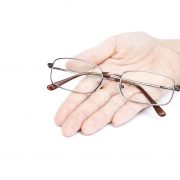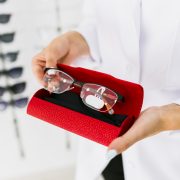All the Lens Options Explained
Buying a new pair of glasses in Portland, OR involves more than just choosing frames that look good. What you decide for the lenses matters just as much—maybe even more. Your lenses affect how well you see, how heavy the glasses feel on your face, and how they hold up over time. With so many options out there, it helps to have a clear understanding of what each one offers before you commit.
Single Vision Lenses
These lenses do one job—and they do it well. They correct a single field of vision, either up close or at a distance. If you need glasses only for reading, or only for driving, this is likely what you’ll end up with. They’re simple and straightforward, and for many people, they’re all that’s needed.
Progressive Lenses
If you need to see clearly at multiple distances, progressives might be a better fit. These lenses allow you to look through different areas of the lens for far, mid-range, and close-up vision. Unlike bifocals or trifocals, progressives have no visible lines.
Bifocal and Trifocal Lenses
Though they’ve been largely replaced by progressives, bifocals and trifocals are still around. They separate vision zones with noticeable lines, which some wearers find easier to adjust to. Bifocals cover distance and near vision, while trifocals add a middle range.
High-index Lenses
If you have a strong prescription, these lenses keep things thin and light. They provide the same correction as standard lenses but without the bulk, which can make a big difference in both comfort and appearance.
Impact-resistant Lenses
Ideal for people who are hard on their glasses or lead active lives, impact-resistant lenses offer durability without sacrificing clarity. They’re also a common pick for children.
Photochromic Lenses
These lenses adjust to changing light. They darken when you step outside and return to clear indoors—perfect if you don’t want to switch between regular glasses and sunglasses.
Polarized Lenses
Used in sunglasses in Portland, OR, polarized lenses reduce glare from surfaces like roads and water. If you spend time outside, they make a noticeable difference.
Lens Coatings
Anti-reflective, scratch-resistant, and blue light filtering options can be added to most lenses. These features improve comfort and extend lens life.
The right lens choice depends on your daily routine and visual needs. With the right combination, your glasses will do more than correct your vision—they’ll fit your life.







